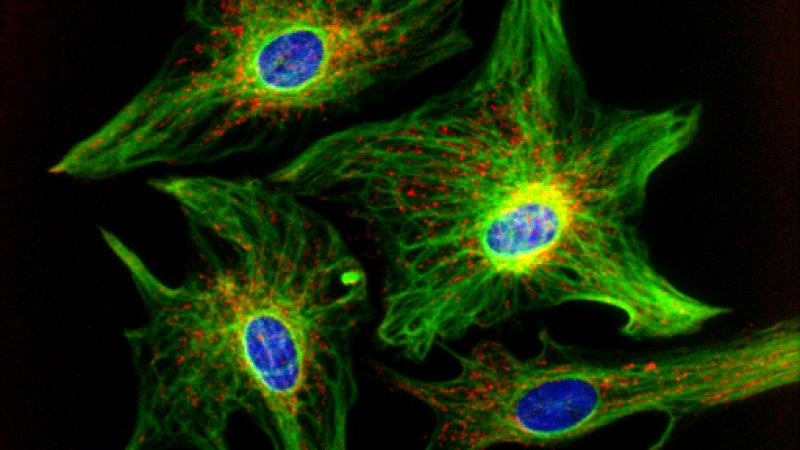Research will study biomaterials that could promote post-injury recovery
June 9, 2017

Manoj Gottipati, a postdoctoral research associate at Rensselaer Polytechnic Institute, has been awarded a two-year $150,000 postdoctoral fellowship from the Craig H. Neilsen Foundation for spinal cord injury research.
The Neilsen Foundation awards postdoctoral fellowships as part of its Spinal Cord Injury Research on the Translational Spectrum portfolio, which seeks to address gaps in the field and advance novel approaches to improving function and developing curative therapies after spinal cord injury.
Gottipati is a researcher in the lab of Ryan Gilbert, associate professor of biomedical engineering at Rensselaer. The Gilbert Lab focuses on the development of biomaterials for use in spinal cord injury repair. These materials are designed to serve as growth conduits, drug delivery vehicles, support scaffolds for regeneration, and culture models for preliminary in vitro testing.
“The Neilsen Foundation fellowship is a national award, and highlights Manoj’s promise as a young investigator in the field of spinal cord injury research,” said Gilbert.
The award will support Gottipati’s research project, “Investigating the potential of aligned fibrous scaffolds in mitigating reactive astrogliosis.”
Following a spinal cord injury, astrocytes―star-shaped glial cells in the brain and spinal cord―that are present in the vicinity of the injury are activated, leading to a process known as reactive astrogliosis, which results in the formation of a glial scar that is non-permissive to the regenerating neurons. This failure to re-establish neuronal connections results in some form of functional deficit below the level of injury in individuals suffering with spinal cord injury.
“Our study aims to reduce the reactivity of astrocytes using biocompatible fibrous biomaterials, thereby promoting axonal regeneration and functional recovery,” said Gottipati. “To accomplish this goal, we will use aligned electrospun poly-L-lactic acid fibers and perform novel in vitro and in vivo studies to study the effect of these fibers on reactive astrocytes and their efficacy in mitigating the reactive state of astrocytes, leading to functional recovery post-injury.”
The Craig H. Neilsen Foundation supports scientific, charitable, and educational organizations that conduct spinal cord injury research, provide training in spinal cord medicine, and provide services to assist individuals and families affected by spinal cord injury. The foundation awards postdoctoral fellowships to encourage early-career training and specialization in the field of spinal cord injury research.
Fellowships like these are vital to The New Polytechnic, an emerging paradigm for teaching, learning, and research at Rensselaer. The New Polytechnic emphasizes and supports collaboration across disciplines, sectors, and regions to address the great global challenges of our day, using the most advanced tools and technologies, many of which are developed at Rensselaer.
About Rensselaer Polytechnic Institute
Rensselaer Polytechnic Institute, founded in 1824, is America’s first technological research university. For nearly 200 years, Rensselaer has been defining the scientific and technological advances of our world. Rensselaer faculty and alumni represent 85 members of the National Academy of Engineering, 17 members of the National Academy of Sciences, 25 members of the American Academy of Arts and Sciences, 8 members of the National Academy of Medicine, 8 members of the National Academy of Inventors, and 5 members of the National Inventors Hall of Fame, as well as 6 National Medal of Technology winners, 5 National Medal of Science winners, and a Nobel Prize winner in Physics. With 7,000 students and nearly 100,000 living alumni, Rensselaer is addressing the global challenges facing the 21st century—to change lives, to advance society, and to change the world. To learn more, go to www.rpi.edu.